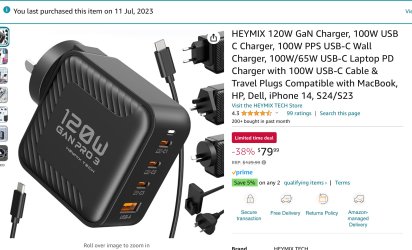- Local time
- 6:02 PM
- Posts
- 23
- OS
- windows 11 64 bit
My laptop has a USB C PD 2 charging capable port
Currently using a 19V/2.1A brick adapter for power supply
Query one
What specifications must i look for in the usb c pd 2 charger that i buy to charge from the laptop usb c port that will supply the above voltage and current and wattage power that will not damage anything within the laptop? will any branded 65W charger work with or without PPS?
Can i use the above continuously plugged in like i do my brick adapter in the absence of the internal battery
Query two
i have another brick adapter with a USB c pin which i use for power/charging with my lenovo yoga whose specs are output ; 20V=2 A | 15V - 3A | 9V = 2A | 5V = 2A - will this work without issues? is this same as a PD 2 usb c charger?
Thank you for any help on this. I am not very familiar with these things
Currently using a 19V/2.1A brick adapter for power supply
Query one
What specifications must i look for in the usb c pd 2 charger that i buy to charge from the laptop usb c port that will supply the above voltage and current and wattage power that will not damage anything within the laptop? will any branded 65W charger work with or without PPS?
Can i use the above continuously plugged in like i do my brick adapter in the absence of the internal battery
Query two
i have another brick adapter with a USB c pin which i use for power/charging with my lenovo yoga whose specs are output ; 20V=2 A | 15V - 3A | 9V = 2A | 5V = 2A - will this work without issues? is this same as a PD 2 usb c charger?
Thank you for any help on this. I am not very familiar with these things
My Computer
System One
-
- OS
- windows 11 64 bit
- Computer type
- Laptop
- Manufacturer/Model
- HP x360 cd
- CPU
- intel i5 8th geeneration
- Memory
- 16GB
- Screen Resolution
- 1920
- Hard Drives
- one 500 GB SSD plus 1 TB hdd (2.5 inches)
- Keyboard
- inbuilt
- Mouse
- inbuilt trackpad
- Internet Speed
- 500 Mbps
- Browser
- Edge chromium
- Antivirus
- Defender






